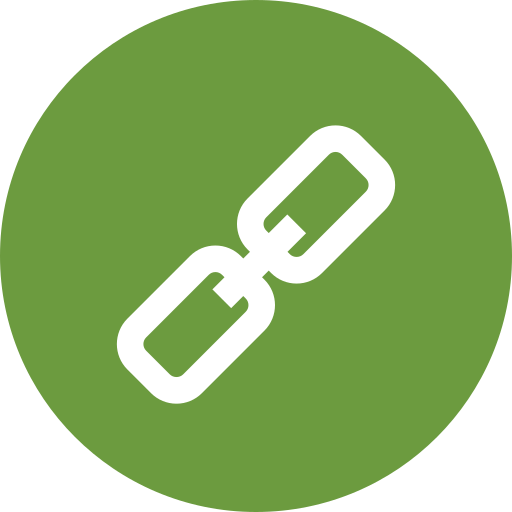| Product name | Per Pill | Savings | Per Pack | Order |
|---|---|---|---|---|
| 60 pills | $0.61 | $36.74 | ADD TO CART | |
| 90 pills | $0.50 | $9.70 | $55.10 $45.40 | ADD TO CART |
| 120 pills | $0.45 | $19.40 | $73.47 $54.07 | ADD TO CART |
| 180 pills | $0.40 | $38.79 | $110.20 $71.41 | ADD TO CART |
| 270 pills | $0.36 | $67.89 | $165.31 $97.42 | ADD TO CART |
| 360 pills | $0.34 | $96.98 | $220.41 $123.43 | ADD TO CART |
| Product name | Per Pill | Savings | Per Pack | Order |
|---|---|---|---|---|
| 60 pills | $0.43 | $25.99 | ADD TO CART | |
| 90 pills | $0.35 | $7.33 | $38.99 $31.66 | ADD TO CART |
| 120 pills | $0.31 | $14.66 | $51.98 $37.32 | ADD TO CART |
| 180 pills | $0.27 | $29.32 | $77.98 $48.66 | ADD TO CART |
| 270 pills | $0.24 | $51.31 | $116.97 $65.66 | ADD TO CART |
| 360 pills | $0.23 | $73.30 | $155.96 $82.66 | ADD TO CART |
| Product name | Per Pill | Savings | Per Pack | Order |
|---|---|---|---|---|
| 90 pills | $0.35 | $31.29 | ADD TO CART | |
| 180 pills | $0.27 | $14.19 | $62.59 $48.40 | ADD TO CART |
| 270 pills | $0.24 | $28.37 | $93.88 $65.51 | ADD TO CART |
| 360 pills | $0.23 | $42.56 | $125.17 $82.61 | ADD TO CART |
Warfarin is a blood thinner medication that is commonly used to prevent and treat blood clots. It is available in various strengths, including 1 mg, 2 mg, and 5 mg. If you are looking to order Warfarin, you can do so online or through your local pharmacy. In this article, we will provide a comprehensive guide on how to order Warfarin, its uses, side effects, and precautions.
What is Warfarin?
Warfarin is an anticoagulant medication that works by blocking the production of vitamin K-dependent clotting factors in the liver. It is used to prevent and treat blood clots that can cause strokes, heart attacks, and other cardiovascular conditions. Warfarin is available in various strengths, including 1 mg, 2 mg, and 5 mg.
Uses of Warfarin
Warfarin is used to prevent and treat various medical conditions, including:
- Blood clots in the legs, lungs, and brain
- Stroke and transient ischemic attack (TIA)
- Heart attack and coronary artery disease
- Atrial fibrillation and other heart rhythm disorders
- Deep vein thrombosis (DVT) and pulmonary embolism (PE)
How to Order Warfarin
You can order Warfarin online or through your local pharmacy. To order Warfarin online, you will need to provide a valid prescription from your doctor. You can also buy generic Warfarin 5 mg on line or order Warfarin 2 mg with Amex. Some online pharmacies also offer discount Warfarin 2 mg line or cheap Warfarin 2 mg online.
| Strength | Price | Payment Method |
|---|---|---|
| Warfarin 1 mg | $10.99 | Visa, Mastercard, Amex |
| Warfarin 2 mg | $14.99 | Visa, Mastercard, Amex |
| Warfarin 5 mg | $19.99 | Visa, Mastercard, Amex |
Precautions and Side Effects
Warfarin can cause several side effects, including:
- Bleeding and bruising
- Nausea and vomiting
- Diarrhea and abdominal pain
- Fatigue and weakness
- Hair loss and skin rash
To minimize the risk of side effects, it is essential to follow the dosage instructions carefully and monitor your blood clotting regularly. You should also inform your doctor about any medications you are taking, including over-the-counter medications and supplements.
Benefits of Ordering Warfarin Online
Ordering Warfarin online can offer several benefits, including:
- Convenience: You can order Warfarin from the comfort of your own home, 24/7.
- Cost-effective: Online pharmacies often offer discount Warfarin 2 mg line or cheap Warfarin 2 mg online.
- Privacy: You can maintain your privacy and avoid embarrassing situations at the pharmacy.
However, it is essential to ensure that you are ordering from a reputable online pharmacy to avoid counterfeit medications.
How to Take Warfarin
To take Warfarin effectively, follow these steps:
- Take the medication exactly as prescribed by your doctor.
- Take the medication at the same time every day.
- Do not miss any doses or take extra doses.
- Monitor your blood clotting regularly.
- Inform your doctor about any medications you are taking, including over-the-counter medications and supplements.
Common Questions About Warfarin
Here are some common questions about Warfarin:
- Q: Can I buy Warfarin without a prescription? A: No, you will need a valid prescription from your doctor to buy Warfarin.
- Q: Can I order Warfarin online? A: Yes, you can order Warfarin online from a reputable online pharmacy.
- Q: What is the difference between Warfarin 1 mg, 2 mg, and 5 mg? A: The difference is the strength of the medication. Your doctor will prescribe the strength that is right for you.
Conclusion
Warfarin is a blood thinner medication that is commonly used to prevent and treat blood clots. You can order Warfarin online or through your local pharmacy. To order Warfarin online, you will need to provide a valid prescription from your doctor. It is essential to follow the dosage instructions carefully and monitor your blood clotting regularly to minimize the risk of side effects. By following the guidelines outlined in this article, you can ensure that you are using Warfarin safely and effectively.
Recommended Online Pharmacies
Here are some recommended online pharmacies where you can order Warfarin:
- Pharmacy A: Offers discount Warfarin 2 mg line and cheap Warfarin 2 mg online.
- Pharmacy B: Offers buy generic Warfarin 5 mg on line and order Warfarin 2 mg with Amex.
- Pharmacy C: Offers purchase genuine Warfarin online and order Warfarin line.
Remember to always consult with your doctor before ordering Warfarin online or through your local pharmacy.
Venous thrombosis, also known as deep vein thrombosis (DVT), is a condition where a blood clot forms in the deep veins of the body, typically in the legs. This condition can be life-threatening if the clot breaks loose and travels to the lungs, causing a pulmonary embolism. In this article, we will discuss the causes, symptoms, and treatment options for venous thrombosis, as well as ways to prevent it.
Causes of Venous Thrombosis
Venous thrombosis can be caused by a variety of factors, including:
- Immobility: Prolonged periods of sitting or lying down can cause blood to pool in the veins, increasing the risk of clotting.
- Injury or trauma: Damage to the veins can cause blood to clot and form a thrombus.
- Genetic disorders: Certain genetic disorders, such as factor V Leiden, can increase the risk of blood clotting.
- Cancer: Cancer can increase the risk of blood clotting, particularly in the veins.
- Surgery: Major surgery can increase the risk of blood clotting, particularly in the veins.
- Age: The risk of venous thrombosis increases with age.
- Obesity: Excess weight can increase the risk of blood clotting, particularly in the veins.
Symptoms of Venous Thrombosis
The symptoms of venous thrombosis can vary, but may include:
- Pain or swelling: Pain or swelling in the affected leg or arm.
- Redness or warmth: Redness or warmth in the affected area.
- Weakness or fatigue: Weakness or fatigue in the affected limb.
- Shortness of breath: Shortness of breath or difficulty breathing.
Treatment Options for Venous Thrombosis
Treatment for venous thrombosis typically involves anticoagulant medications, which help to prevent the clot from growing and reduce the risk of pulmonary embolism. The following table outlines the different types of anticoagulant medications that may be used to treat venous thrombosis:
| Medication | Mechanism of Action | Side Effects |
|---|---|---|
| Warfarin | Inhibits vitamin K-dependent clotting factors | Bleeding, bruising, hair loss |
| Heparin | Inhibits thrombin and factor Xa | Bleeding, thrombocytopenia |
| Low molecular weight heparin | Inhibits thrombin and factor Xa | Bleeding, thrombocytopenia |
| Direct oral anticoagulants (DOACs) | Inhibits thrombin or factor Xa | Bleeding, gastrointestinal upset |
In addition to anticoagulant medications, other treatment options may include:
- Compression stockings: Wearing compression stockings can help to reduce swelling and improve blood flow.
- Elevation: Elevating the affected limb can help to reduce swelling and improve blood flow.
- Pain management: Pain management medications, such as acetaminophen or ibuprofen, can help to relieve pain and discomfort.
- Thrombectomy: In some cases, a surgical procedure called thrombectomy may be necessary to remove the clot.
Preventing Venous Thrombosis
Preventing venous thrombosis is crucial, particularly for individuals who are at high risk. The following are some ways to prevent venous thrombosis:
- Stay active: Regular exercise can help to improve blood flow and reduce the risk of clotting.
- Maintain a healthy weight: Excess weight can increase the risk of blood clotting, so maintaining a healthy weight is essential.
- Avoid prolonged periods of immobility: If you have a job that involves sitting or standing for long periods, make sure to take regular breaks to stretch and move around.
- Wear compression stockings: Wearing compression stockings can help to reduce swelling and improve blood flow.
- Avoid smoking: Smoking can increase the risk of blood clotting, so quitting smoking is essential.
Here are some additional tips for preventing venous thrombosis:
- Get regular check-ups: Regular check-ups with your doctor can help to identify any underlying conditions that may increase the risk of venous thrombosis.
- Stay hydrated: Drinking plenty of water can help to improve blood flow and reduce the risk of clotting.
- Avoid tight clothing: Tight clothing can constrict blood flow, increasing the risk of clotting.
- Take breaks on long trips: If you are traveling by car or plane, make sure to take regular breaks to stretch and move around.
Complications of Venous Thrombosis
Venous thrombosis can lead to several complications, including:
- Pulmonary embolism: A pulmonary embolism occurs when a clot breaks loose and travels to the lungs, blocking blood flow.
- Post-thrombotic syndrome: Post-thrombotic syndrome is a condition that occurs when a clot damages the valves in the veins, causing chronic swelling and pain.
- Chronic venous insufficiency: Chronic venous insufficiency is a condition that occurs when the veins are unable to return blood to the heart, causing chronic swelling and pain.
Here are some signs and symptoms of complications of venous thrombosis:
- Chest pain or shortness of breath: If you experience chest pain or shortness of breath, seek medical attention immediately.
- Severe swelling or pain: If you experience severe swelling or pain in the affected limb, seek medical attention immediately.
- Fever or chills: If you experience fever or chills, seek medical attention immediately.
Conclusion
Venous thrombosis is a serious condition that can be life-threatening if left untreated. It is essential to be aware of the causes, symptoms, and treatment options for venous thrombosis, as well as ways to prevent it. By staying active, maintaining a healthy weight, and avoiding prolonged periods of immobility, you can reduce your risk of developing venous thrombosis. If you experience any symptoms of venous thrombosis, seek medical attention immediately. Remember, prevention is key, and early treatment can help to prevent complications and improve outcomes.
























